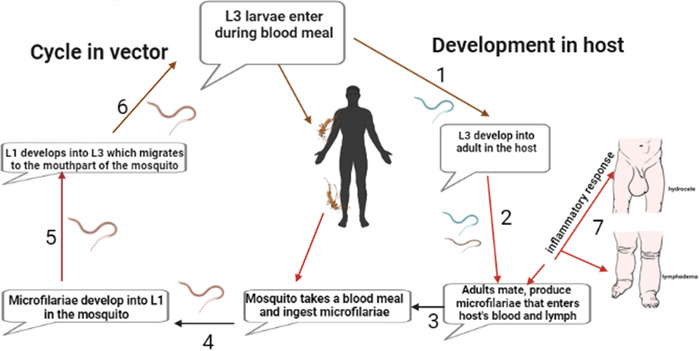Figure 1.

Lifecycle of filarial parasites, demonstrated with W. bancrofti. Both a vector and a mammalian host are required for the development of the nematode. (1) The infected vector transmits the third‐stage larvae (L3) into the human host during a blood meal. (2) The L3 mature into adult worms. (3) The parasites produce microfilariae (MF), which migrate to the lymphatics and blood for circulation. (4) The vector once again ingests the microfilariae during a blood meal from an infected host. (5) The microfilariae develop into the L1 stage. (6) The L1 larvae matures into L3 larvae which migrate to the vector's proboscis via the haemocel. (7) Clinical manifestations of LF due to inflammation mainly from worm antigen. Created with Biorender.com.
